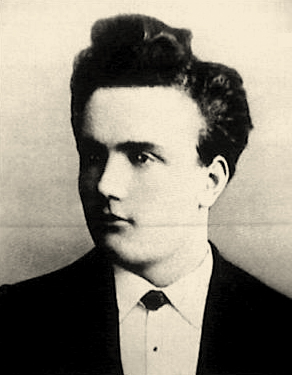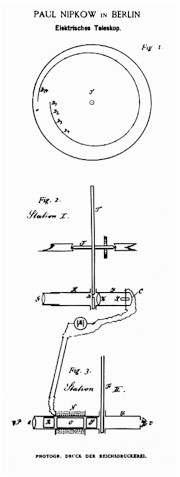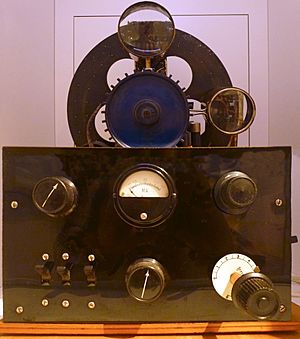Paul Gottlieb Nipkow facts for kids
Quick facts for kids
Paul Gottlieb Nipkow
|
|
|---|---|

Nipkow in about 1884
|
|
| Born | 22 August 1860 |
| Died | 24 August 1940 (aged 80) |
| Nationality | German |
| Occupation | Engineer |
| Engineering career | |
| Projects | Nipkow disk |
| Significant advance | Television |
Paul Nipkow was a German inventor. He was born on August 22, 1860, and died on August 24, 1940. He invented the Nipkow disk. This special disk helped create the first televisions. Many TV stations used his disk to broadcast shows in the 1920s and 1930s. Later, newer electronic systems replaced it.
Some people call Nipkow the "father of television." The world's first public TV station was named "Fernsehsender Paul Nipkow" to honor him.
Contents
Early Life and Studies
Paul Nipkow was born in Lauenburg. This town is now called Lębork and is in Poland. When he was a student, he experimented with phones. He also tried to send moving pictures.
After school, he moved to Berlin to study science. He learned about how the eye sees from Hermann von Helmholtz. He also studied how electricity works with Adolf Slaby.
The Amazing Nipkow Disk
While he was still a student, Nipkow thought of an "electric telescope." This idea was mostly about using a disk with a spiral of tiny holes. This special disk is called the Nipkow disk. It could break down a picture into a line of small points.
People say he got the idea on Christmas Eve in 1883. Another inventor, Alexander Bain, had sent pictures using telegraphs in the 1840s. But Nipkow's disk made the process of encoding pictures much better.
Nipkow applied for a patent in Berlin. He wanted to protect his idea for an "electric telescope." This patent was granted on January 15, 1885. We don't know if Nipkow ever built a working disk himself. The patent ended after 15 years because there wasn't much interest. Nipkow then worked as a designer and stopped working on sending pictures.
How Early TV Worked
The first television broadcasts used a mechanical way to scan pictures. This method used the Nipkow disk. So, Nipkow could get credit for his invention.
Nipkow saw television for the first time at a show in Berlin in 1928. He said, "The televisions stood in dark cells. Hundreds stood and waited patiently. They wanted to see television for the first time. I waited among them, getting more and more nervous. Now for the first time, I would see what I had thought of 45 years ago. Finally, I reached the front row. A dark cloth was moved aside, and I saw a flickering image. It was not easy to see." The TV system he saw was made by the company Telefunken.
By the early 1930s, new electronic ways of scanning pictures became popular. These were based on the work of Manfred von Ardenne. This meant Nipkow's disk was no longer needed for TV to keep developing.
"Paul Nipkow" Television Station
The world's first public television station opened in Berlin in 1935. It was named Fernsehsender "Paul Nipkow" after him. He was seen as the "spiritual father" of early TV technology. Nipkow became an honorary president of a "television council."
Nipkow died in Berlin in 1940, two days after his 80th birthday. The government held an official ceremony for him.
See also
- German inventors and discoverers
- History of television
 In Spanish: Paul Gottlieb Nipkow para niños
In Spanish: Paul Gottlieb Nipkow para niños



